 |
 |
 |
| |
An Enhanced Version of the Trofile HIV Co-receptor Tropsim Assay Predicts Emergence of CXCR4 Use in ACTG5211 Vicriviroc Trial Samples
|
| |
| |
Reported by Jules Levin
15th CROI, Feb 3-6, 2008, Boston
Jacqueline Reeves1*, Dong Han1, Timothy Wilkin2, Terri Wrin1, Daniel Kuritzkes3, Christos Petropoulos1, Jeannette Whitcomb1, Neil Parkin1, Roy Gulick2, and Eoin Coakley1 1Monogram Biosciences, South San Francisco, CA, USA 2Weill Medical College of Cornell University, New York, NY, USA 3Brigham and Women's Hospital, Cambridge, MA, USA
RESULTS
Figure 2. Of 12 subjects with R5 virus at screen and DM at study baseline by the standard Trofile assay, enhanced Trofile reclassified 7 subjects (58%) with DM virus at screen.
Figure 3. Of 18 additional subjects with CXCR4-using virus detected on study by standard Trofile, enhanced Trofile reclassified 9 subjects (50%) with DM virus at screen.
Figure 4. Of 86/88 subjects tested with R5 virus only at all time points by standard Trofile, enhanced Trofile reclassified 9 subjects (10%) with DM virus at screen.
Figure 5. 15 subjects with DM virus at screen by enhanced Trofile received VCV on study. 12/15 subjects had early emergence of CXCR4-using variants detected by standard Trofile.
SUMMARY & CONCLUSIONS
In total, 25/116 ACTG5211 subjects previously defined as having R5 virus at study screen by standard Trofile were reclassified with DM virus at screen by enhanced Trofile. Onstudy, 15 of these 25 reclassified subjects received VCV and 12/15 had CXCR4-using virus detected at week 2-8 (by standard Trofile).
The enhanced Trofile assay is a better predictor of subsequent CXCR4-use in 12 VCV recipients and would have excluded 3 VCV recipients with subsequent R5 virus only (by standard Trofile).
On balance, the enhanced Trofile assay appears be an improved screening tool for determining eligibility for CCR5 antagonist therapy.
Reanalysis of virologic response to VCV in light of enhanced Trofile assay results is ongoing.
BACKGROUND
· HIV entry inhibitors which block infection via CCR5 have shown efficacy in suppressing CCR5- (R5) but not CXCR4- (X4) or dual/mixed-tropic (DM) HIV.
· The TrofileTM assay (Monogram Biosciences) (Figure 1) is useful for selection and monitoring of patients receiving these inhibitors.
· In mixed envelope (env) populations, Trofile detects minor variants at 10% and 5% of the population with 100 and 83% sensitivity, respectively (levels below 5%
were not tested)(1). Minor variants below the detection limit of Trofile can sometimes be identified by clonal analysis and may be selected following therapy with entry inhibitors targeting CCR5.
· An enhanced sensitivity Trofile assay has been developed that allows improved minor CXCR4-using variant detection in env clone mixtures (0.1-0.3%) and earlier detection of minor CXCR4-using subpopulations in longitudinal samples from PR/RT inhibitor experienced patients (2,3,4).
· We hypothesized that enhanced Trofile might better identify CXCR4-using virus in the screening samples from subjects enrolled into ACTG 5211 (5,6).
· ACTG5211 was a placebo controled dose ranging (5, 10, 15 mg) phase 2b study of the CCR5 antagonist vicriviroc (VCV) in 118 treatment-experienced subjects with R5 virus at study screen.
· Reduced virologic response was observed among 12 subjects with R5 virus at screen but DM at baseline, and in 18 subjects with CXCR4-using virus on study as determined by the standard Trofile assay.
METHODS
The co-receptor tropism of virus populations obtained at screen and baseline from 116 subjects enrolled into ACTG5211 was determined with the enhanced assay and compared to original tropism results. The number of subjects reclassified with DM virus at screen and who would have been excluded from the study by the enhanced assay was determined and compared to the number of patients with CXCR4-using virus on-study by the standard tropism assay.
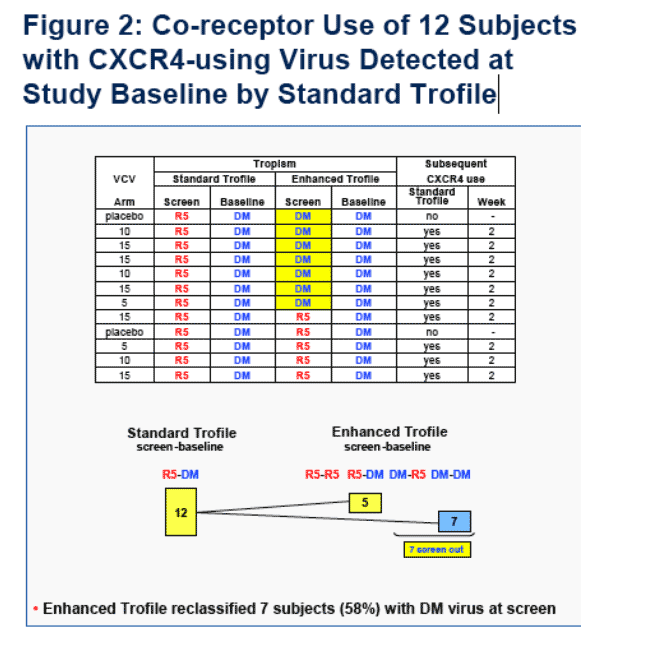
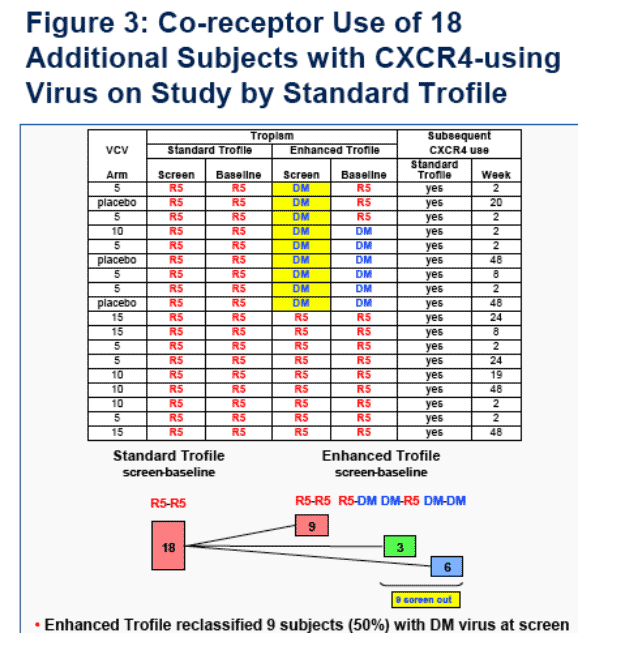
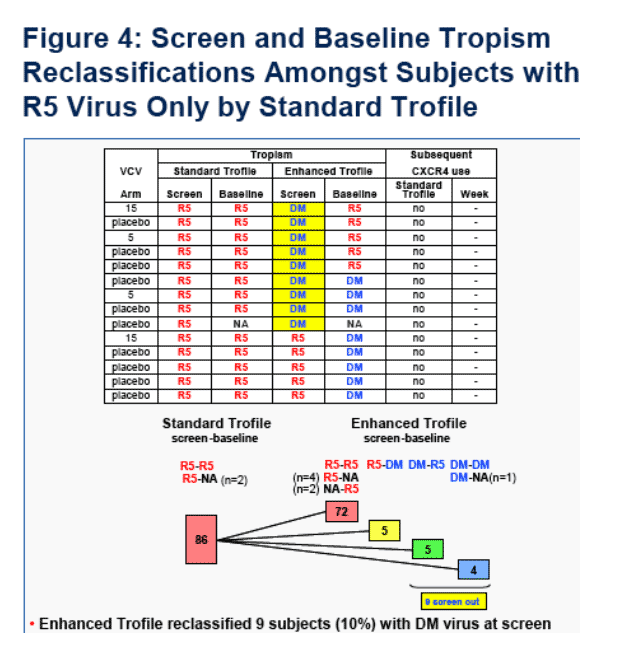
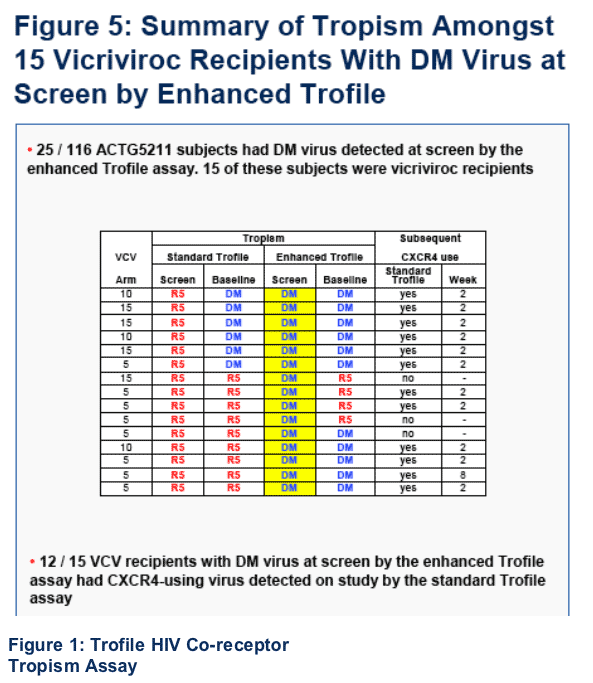
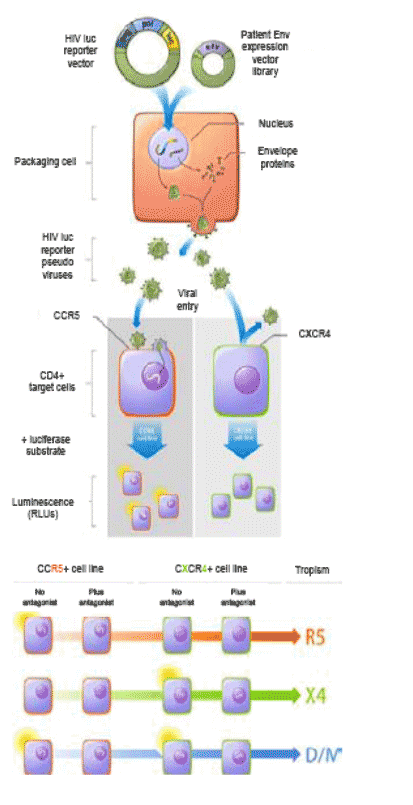
REFERENCES
(1). Whitcomb et al. AAC Vol. 51, p. 566-575, 2007.
(2). Reeves et al. 47th ICAAC, H-1026/283, 2007.
(3). Reeves et al. 11th European AIDS Conference, P1.2/03, 2007.
(4). Reeves et al. 3rd International Workshop on Targeting HIV Entry, 11, 2007.
(5). Wilkin et al. CID Vol. 44, p. 591-595, 2007.
(6). Gulick et al. JID Vol. 196, p. 304-312, 2007.
|
| |
|
 |
 |
|
|